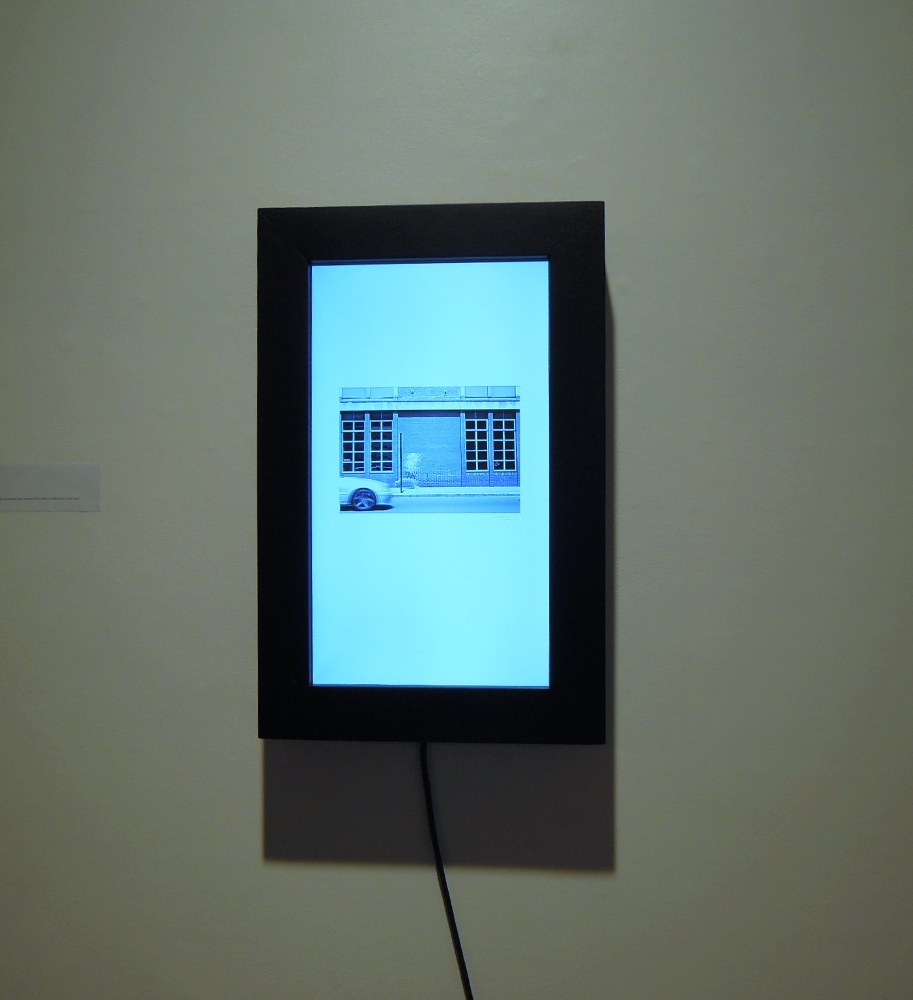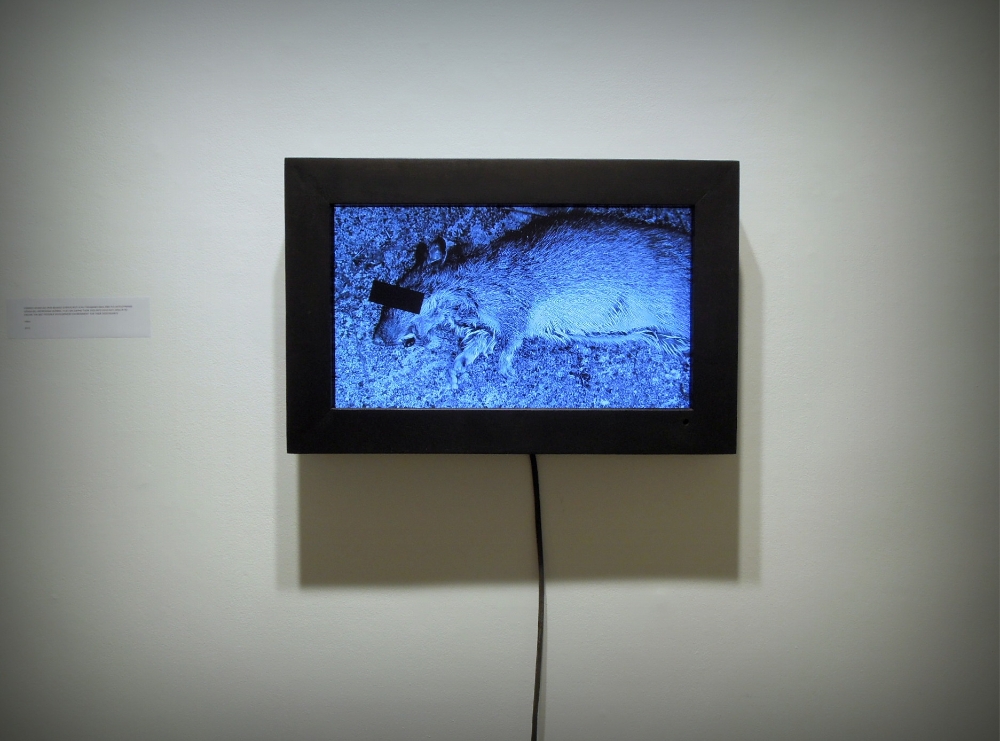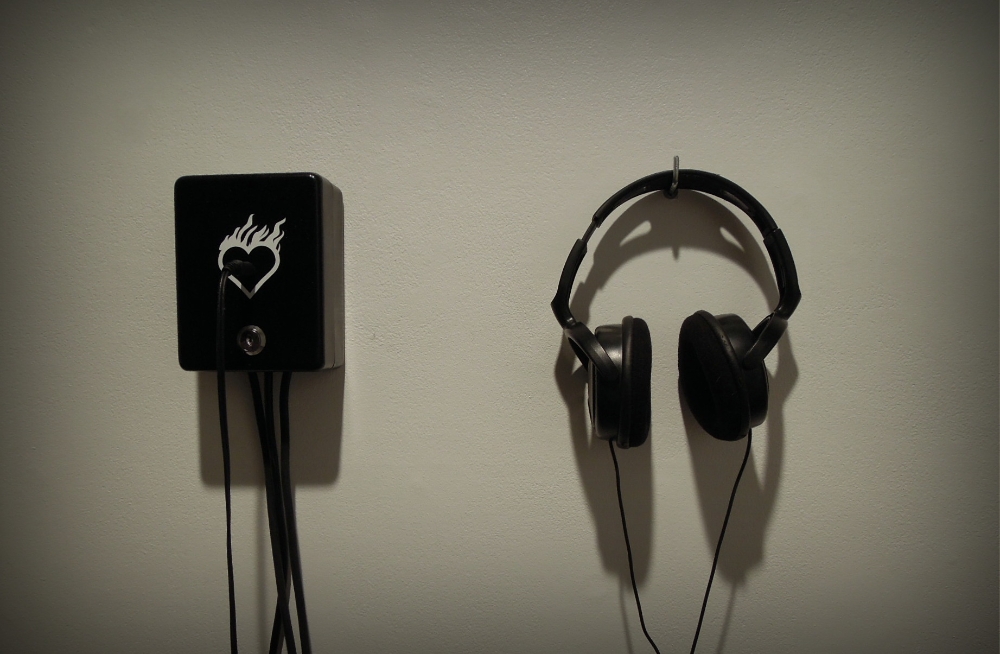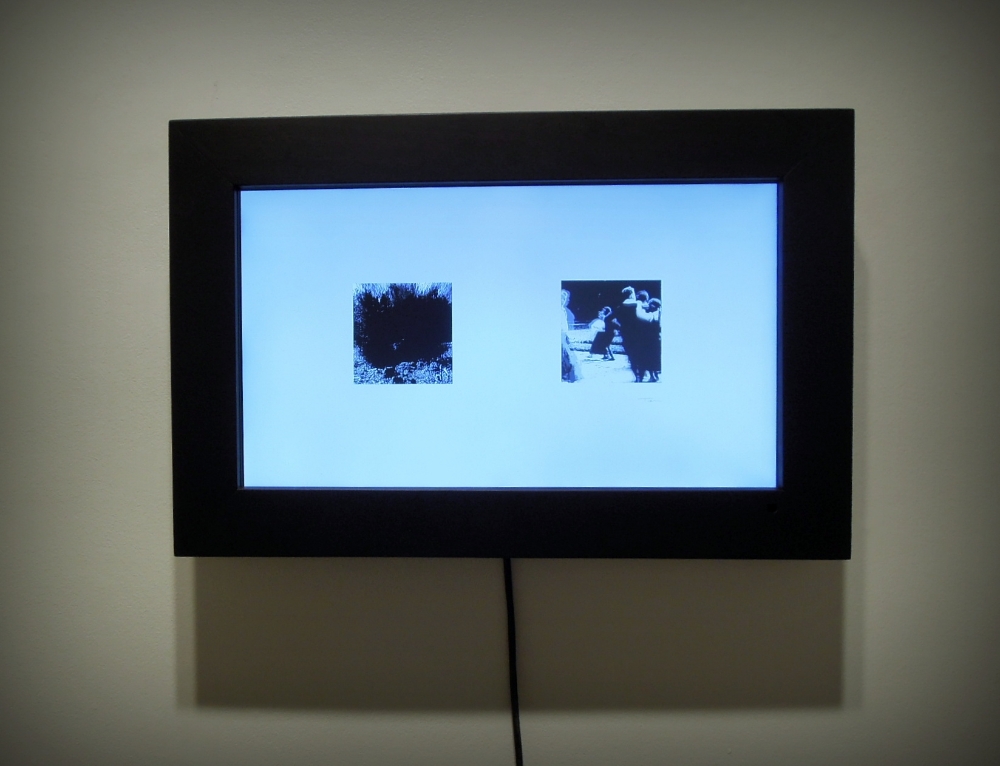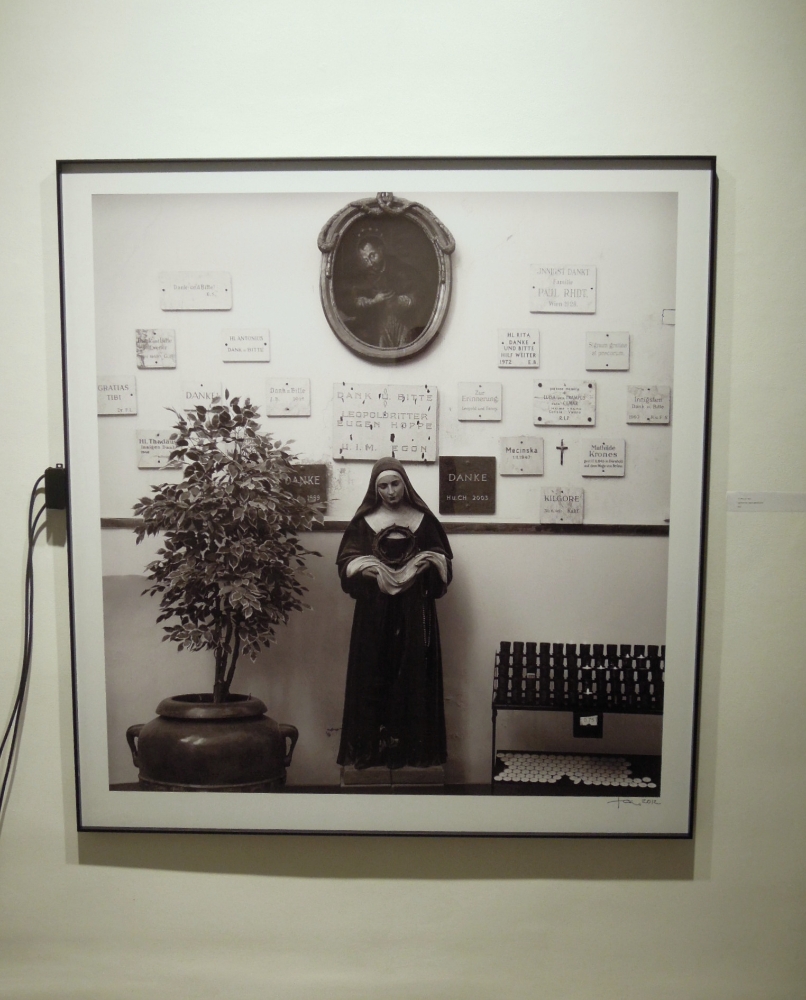Andres Tali’s (1956) exhibition “My heart burns forever (sketches on St. Rita)” affects from the first glimpse or even before – through the gallery’s display window. While most audience go to Tumblr, Youtube or similar pages for multimedia stimulation, it is harder and harder to provoke people visually through art. This exhibition is a great example on how to still pull it off. It mostly works because of the briefness of the video clips and because they are loaded with possible meaning, while an exact message is very hard to find.
In essence this exhibition is very simple – just three screens, a black and white photograph and a pair of headphones. The black and white balance in the gallery is well calibrated and there are no other colors present. The video screens are surrounded by bold black frames that remind of obituaries. The “videos” are not ten minutes long as usually, but rather short looped clips that repeat every 5 seconds. Opposite is the poster size photo of St. Rita’s statue with carved stones saying “thank you” behind her. The works of the exhibition are tied together by playing of the ambient audio. It feels like the soundtrack of a haunted carnival house or a pinball game match. It is humorous and spooky at the same time. There is an alternative soundtrack played through the headphones connected to a black box on the wall. It has an image of a burning heart on it and plays a loop of people screaming (with their hearts burning?).
The first video shows a street with cars and people passing. Each of the passers has been “censored” with a block, but for each of them the block is different. Thus they are different in their unification. This is the longest video and it is hard to catch when the loop starts over again. The second video is of a decaying rat with flies supposedly laying its eggs into the rat’s mouth. The rat’s identity has been concealed with a black block like the passers from the video before. The last video piece is entitled “Small Wars” and it shows two loops next to each other. One of them shows Estonian traditional dancing and the other one an explosion. This piece is about two or three seconds long. This shortness of works is favourable as they do not get boring, it might even be more stimulating as it’s harder to perceive and the viewer has to focus on it more. This is just the right medium for an audience who spends most of their time on Tumblrs full of moving three frame gif images. This limited amount of (specific) information leaves the piece open to multiple interpretations by the viewer. Tali does not turn the video images into an iconic sign to be perceived and recognized straight away, rather he seals the meanings inside the indexical signifier and leaves the audience with questions and theories about the signified. These doubts follow the viewer home and they might even unravel themselves a day, a week or a month later. This is one reason why this exhibit gives a strong impression.
The concept and the info texts of the works don’t help much with deciphering their message. The first mostly recites the myth of St. Rita while the second notes in detail the used audio and video sources. In the concept Tali does also mention the power of sketches and apparently all of the works are sketches for works he never finished or carried out. Such sketches have captured the main essence of the work to be and present the idea in its rawness without the extra polish. So we have a collection of unfinished sketches unified by a mysterious force.
Mysticism has an important role in Tali’s work and here it has been perfectly “exhibited”. In the text he references to the myth of St Rita and the way her spectacle captivated her family. In short, after her birth and christening white bees made a nest in St Rita’s mouth without hurting her. “The family watched the scene and was mystified by it.” Tali has intended to achieve the same effect with his art pieces and the audience. The artworks cannot be retold to ourselves or others in a short and clear way, because everything hints that there is something else behind them, something we are not getting or not understanding so we go on a quest to find that something and the works keep looping in our heads in a surreal way.
In the concept Tali does reference to David Lynch’s cryptic visual language as a source of inspiration. He claims that he is manipulating with the viewers’ emotions through the looping of the video clips, the symbols and acts. The viewer is engulfed in a sea of unfinished sentences and sketches that connect in a different way each time. Tali says that all of this is calculated and intentionally made uncomfortable for the audience. Ironically I found that everything is done in a way that is most comfortable for today’s viewers – from the well designed frames for the screens to the audio level of the screams in the headphones. The only thing that is made hard to grasp is the message and that is not always easy to do in regular everyday situations either.
For me the exhibition is mostly about the different audio-visual rhythms of the presented artworks and the way in which they become a big machine. A machine whose every component has a different history and a role. Still in the end they function as a whole and produce a product. But what is this machine’s point and what is the product?
The exhibition have been open at Draakoni gallery (Pikk 18, Tallinn) on 3-15 December, 2012.
